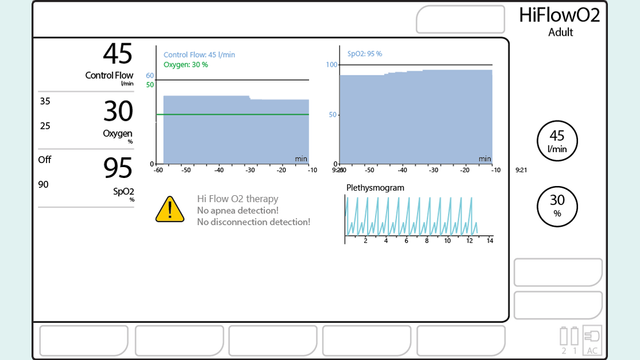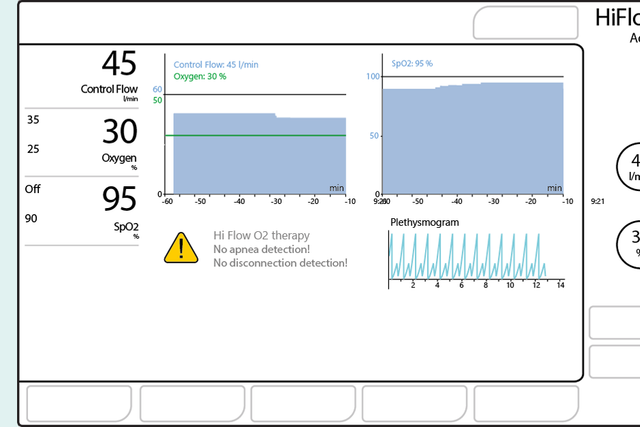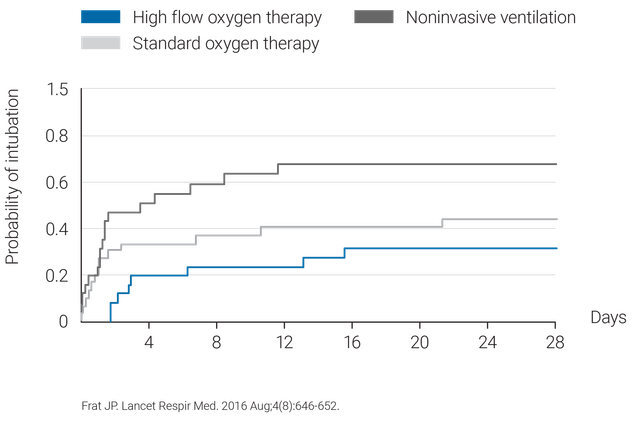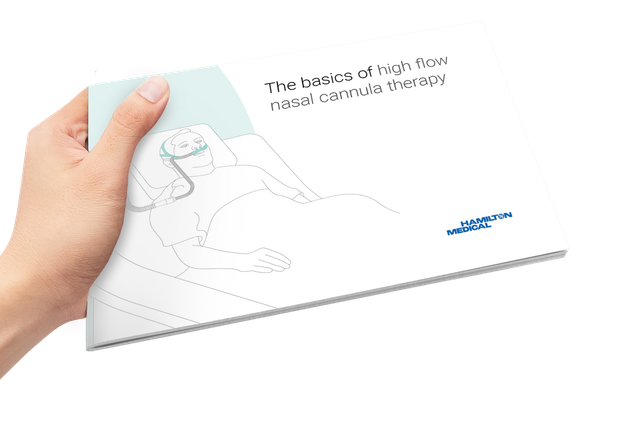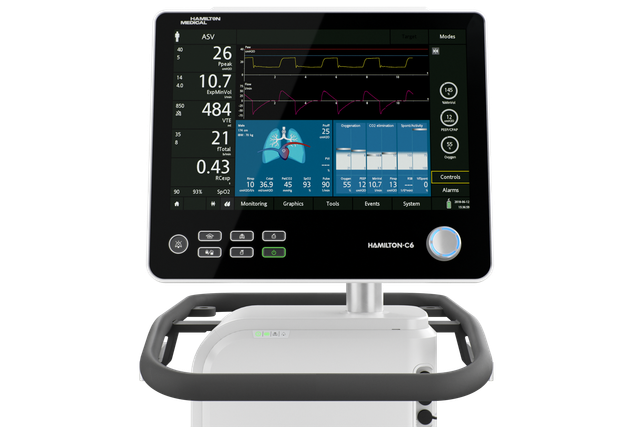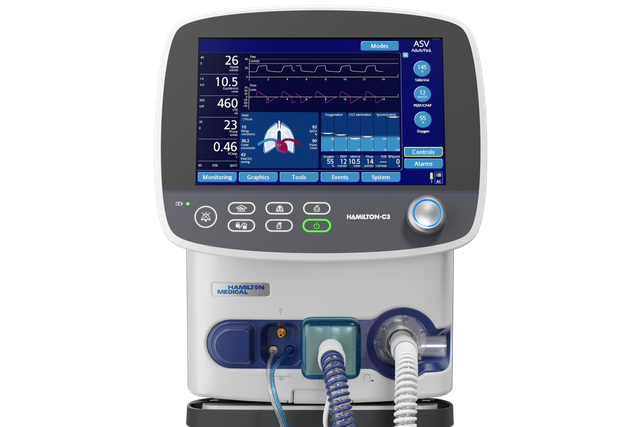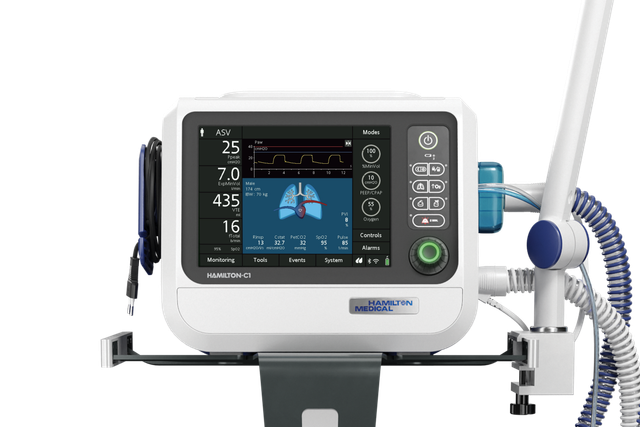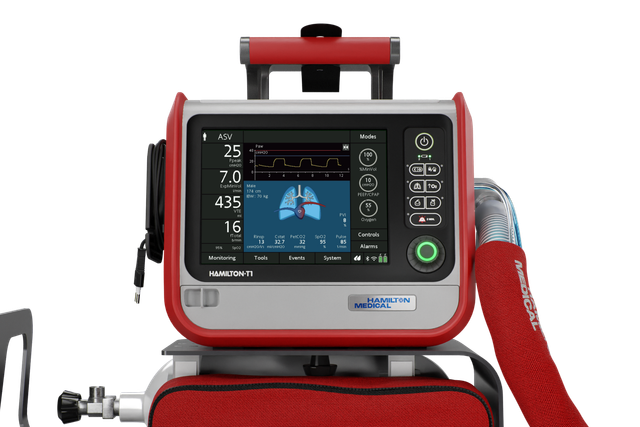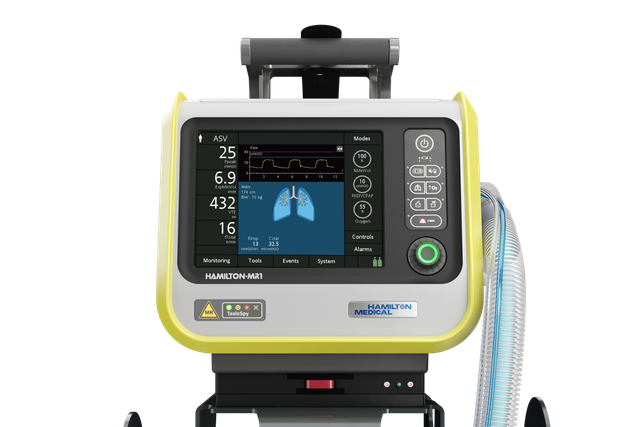Effects of High‑Flow Nasal Cannula on the Work of Breathing in Patients Recovering From Acute Respiratory Failure.
Delorme M, Bouchard PA, Simon M, Simard S, Lellouche F. Effects of High‑Flow Nasal Cannula on the Work of Breathing in Patients Recovering From Acute Respiratory Failure. Crit Care Med. 2017;45(12):1981‑1988. doi:10.1097/CCM.0000000000002693
OBJECTIVES
High‑flow nasal cannula is increasingly used in the management of respiratory failure. However, little is known about its impact on respiratory effort, which could explain part of the benefits in terms of comfort and efficiency. This study was designed to assess the effects of high‑flow nasal cannula on indexes of respiratory effort (i.e., esophageal pressure variations, esophageal pressure‑time product/min, and work of breathing/min) in adults.
DESIGN
A randomized controlled crossover study was conducted in 12 patients with moderate respiratory distress (i.e., after partial recovery from an acute episode, allowing physiologic measurements).
SETTING
Institut Universitaire de Cardiologie et de Pneumologie de Québec, QC, Canada.
SUBJECTS
Twelve adult patients with respiratory distress symptoms were enrolled in this study.
INTERVENTIONS
Four experimental conditions were evaluated: baseline with conventional oxygen therapy and high-flow nasal cannula at 20, 40, and 60 L/min. The primary outcomes were the indexes of respiratory effort (i.e., esophageal pressure variations, esophageal pressure-time product/min, and work of breathing/min). Secondary outcomes included tidal volume, respiratory rate, minute volume, dynamic lung compliance, inspiratory resistance, and blood gases.
MEASUREMENTS AND MAIN RESULTS
Esophageal pressure variations decreased from 9.8 (5.8-14.6) cm H2O at baseline to 4.9 (2.1-9.1) cm H2O at 60 L/min (p = 0.035). Esophageal pressure-time product/min decreased from 165 (126-179) to 72 (54-137) cm H2O • s/min, respectively (p = 0.033). Work of breathing/min decreased from 4.3 (3.5-6.3) to 2.1 (1.5-5.0) J/min, respectively (p = 0.031). Respiratory pattern variables and capillary blood gases were not significantly modified between experimental conditions. Dynamic lung compliance increased from 38 (24-64) mL/cm H2O at baseline to 59 (43-175) mL/cm H2O at 60 L/min (p = 0.007), and inspiratory resistance decreased from 9.6 (5.5-13.4) to 5.0 (1.0-9.1) cm H2O/L/s, respectively (p = 0.07).
CONCLUSIONS
High-flow nasal cannula, when set at 60 L/min, significantly reduces the indexes of respiratory effort in adult patients recovering from acute respiratory failure. This effect is associated with an improvement in respiratory mechanics.









